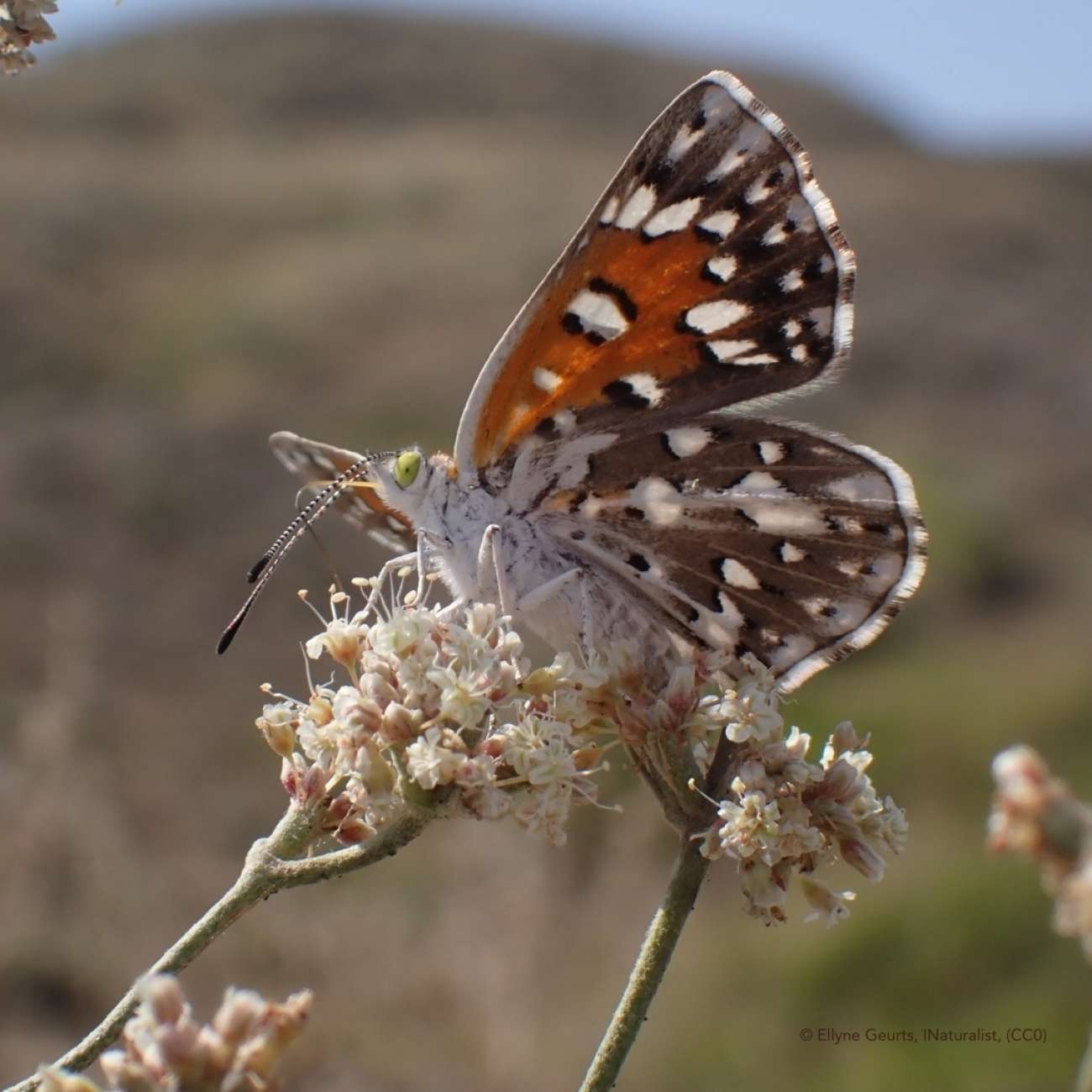The Mormon metalmark
Meet Morgan!

About Morgan: The Mormon metalmark (Apodemia mormo) is a small butterfly with a wingspan of 25 to 32 mm. It can be found in the Similkameen and Okanagan valleys of southern British Columbia and in the Grasslands National Park in Saskatchewan. This species is distinctive due to the orange centers of its forewings, brown upper wings featuring black marks, and white spots, which collectively inspired its name. As a caterpillar, the larva displays different colors, appearing black with purple and yellow spots!
Morgan and her family rely on open and arid habitats where they can find their host plants such as Snow Buckwheat in British Columbia or Few-flowered Buckwheat in Saskatchewan. The butterflies can be found on natural hillsides, rocky slopes, or even roads.
The species has been listed as Endangered in British Columbia in 2003 and as of Special Concern in Saskatchewan in 2014.
Why are they important: The Mormon metalmark is the only representative of the Riodinadea family of butterflies found in Canada. Most members of this family are generally located in South America, making the study of the Mormon metalmark a valuable opportunity for evolutionary and ecological research. Additionally, since this species is geographically divided into two distinct populations in Canada, there is still much to learn about them.
The main threats: Morgan and her family are suffering from habitat loss as well as the human alteration of their habitat due to the increase of constructions that could have an impact on the host plants of that species. Since the species only has one generation per year, it also suffers from climate change, specifically wildfires in Saskatchewan. The spread of invasive species such as Eurasian plants or insects can cause a decline in the host plant population of the Mormon metalmark.
However, the prairie population in Saskatchewan is protected within the Grasslands National Park. Thanks to research, the status of the species in the province went from Threatened in 2003 to of Special Concern in 2014.
How we can help: If you are living close to their habitat, we recommend planting native species that could benefit that species. Check out our Ecoregional Planting guides and the Find Your Roots tool for more information. These species are suffering from our lack of knowledge. Talking and learning about them and the local efforts that are being made to help is also crucial for their survival. By letting your community know about their status, we are not letting Morgan and her friends disappear in silence.